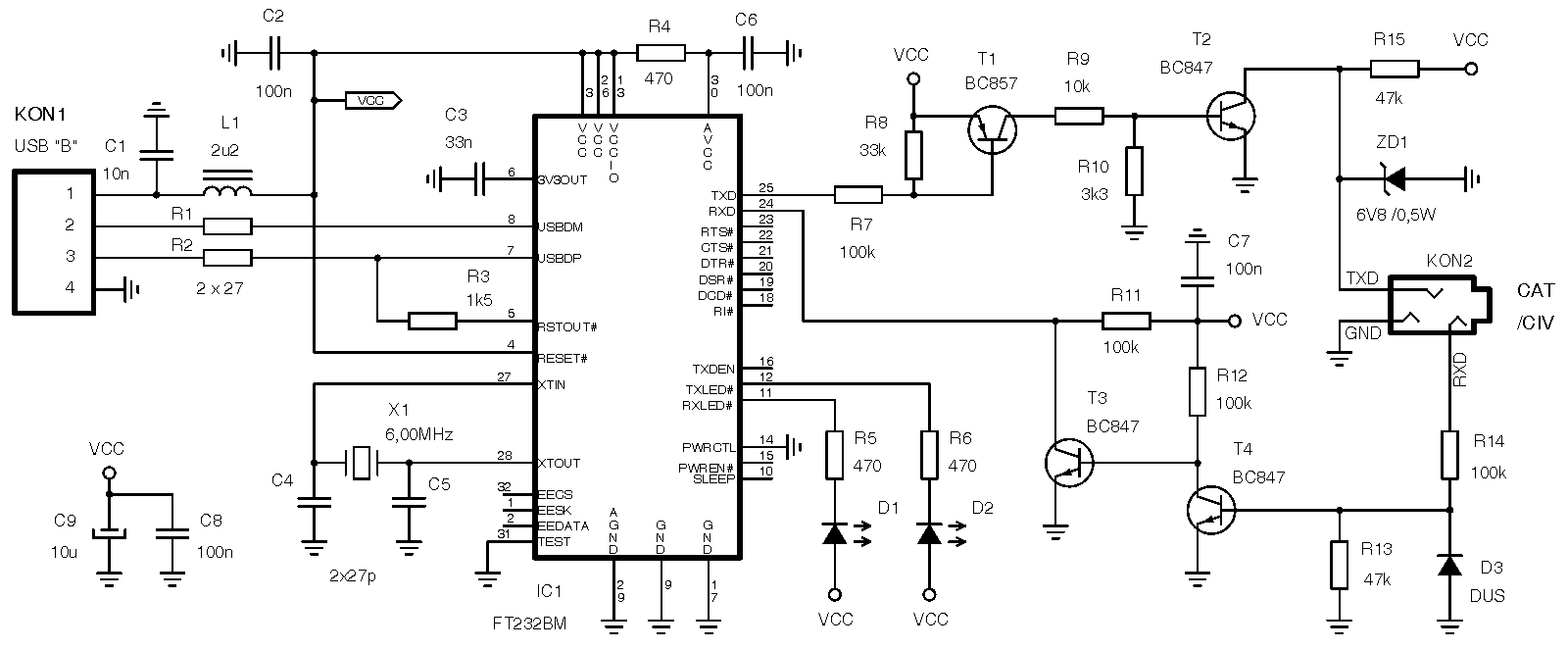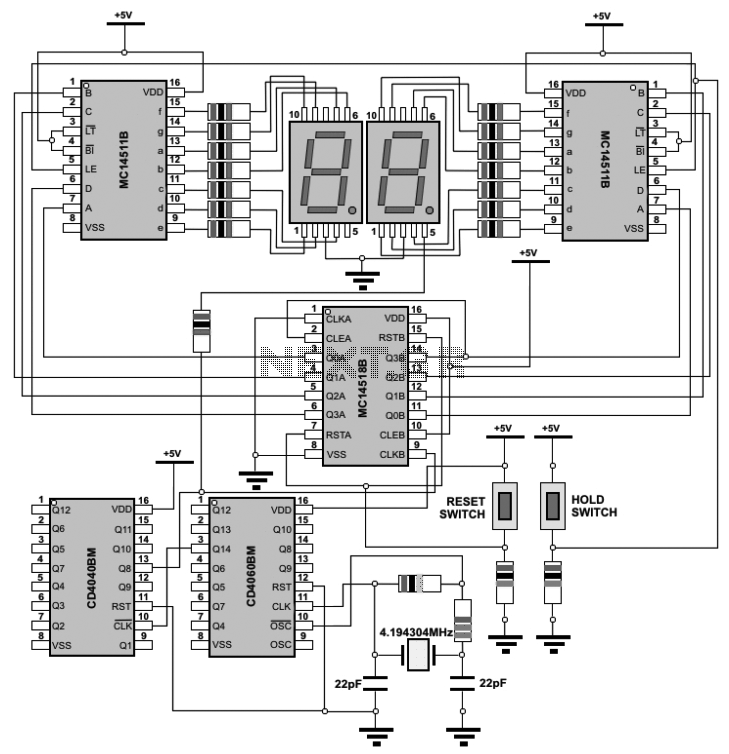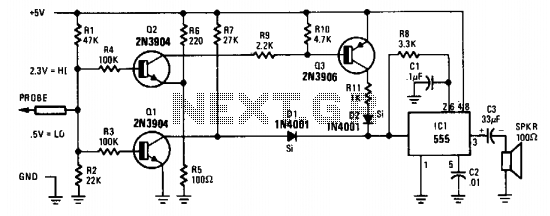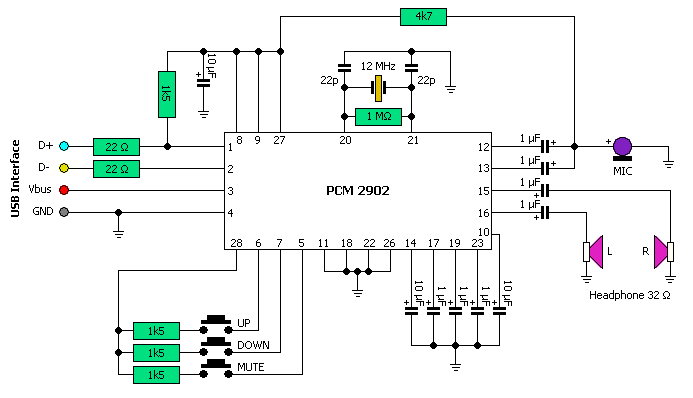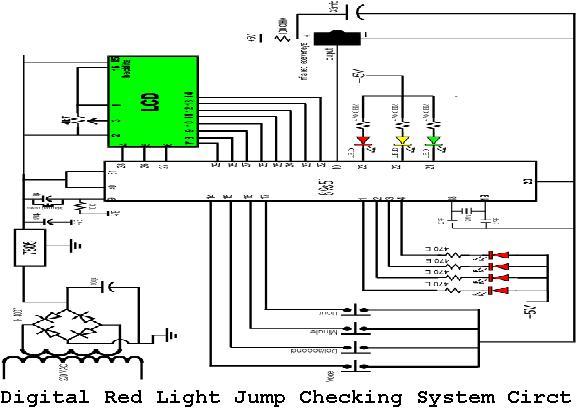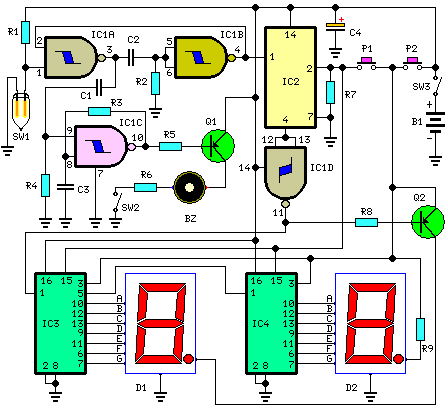
USB Digital Setting Circles

The serial version of the DSC circuit described in these pages is easily adaptable for use with a USB-serial conversion cable. FTDI manufactures the TTL-232R-5V cable, which converts TTL-level serial data directly from the PIC to USB for connection to a PC. This cable enables the removal of the MAX232 chip and several capacitors that were part of the serial circuit for converting TTL to RS-232 and vice versa. Additionally, it eliminates the need for an external power supply and the components required for the voltage regulator on the board, allowing power to be drawn directly from the USB port. While updating the original circuit for USB compatibility, several changes were also made. The most noticeable change is the removal of the pull-up resistors on the unused PIC I/O pins. A less obvious change is the transition from a four-pin oscillator to a simple crystal for clocking the PIC. Furthermore, the original PIC16F84 was substituted with a more cost-effective equivalent, the PIC16F628, which necessitates updated hex code. Consequently, the DB9 connector for the serial port has been removed, and a 6-pin connector JP4 serves as the connection point for the TTL-232R-5V cable. As a result, the USB version of the circuit is significantly simpler than its serial counterpart. FAR Circuits offers a kit for this circuit that includes a PC board along with all board-mounted components and connectors, excluding the TTL-232R-5V cable, which must be purchased separately. This cable is available from suppliers like Mouser and DigiKey for approximately $20 plus shipping. Additional information on ordering the kit from FAR Circuits can be found on their website.
The modified DSC circuit integrates a USB-serial conversion cable, specifically the FTDI TTL-232R-5V, to facilitate direct communication between the PIC microcontroller and a PC. This design choice streamlines the circuit by eliminating the MAX232 chip, which was previously necessary for converting TTL signals to RS-232 levels, along with the associated capacitors. The reliance on USB power simplifies the overall power management, making the circuit more compact and efficient.
In terms of component modifications, the removal of pull-up resistors on unused I/O pins of the PIC microcontroller reduces unnecessary power consumption and board complexity. The transition from a four-pin oscillator to a crystal oscillator enhances the stability and accuracy of the clock signal driving the PIC, which is crucial for maintaining timing in embedded applications.
The substitution of the PIC16F84 with the PIC16F628 not only reduces costs but also maintains functionality, although it requires corresponding updates to the firmware to ensure compatibility with the new microcontroller. The absence of the DB9 connector further streamlines the design, as the 6-pin JP4 connector provides a direct interface for the TTL-232R-5V cable, promoting an easier connection to the PC.
Overall, the adaptation of the DSC circuit for USB operation results in a more user-friendly and efficient design, suitable for various applications that require serial communication without the complexity of traditional RS-232 interfaces. The availability of a kit from FAR Circuits allows for straightforward assembly, making it accessible for hobbyists and professionals alike.The serial version of the DSC circuit described in these pages is readily adapted to use with a USB-serial conversion cable. In fact, FTDI makes the TTL-232R-5V cable that converts TTL-level serial data coming straight from the PIC into USB for the PC.
Using this cable allows us to eliminate the MAX232 chip (and several capacitors) used in the ser ial circuit that converts TTL to RS-232 and back. At also allows us to eliminate the external power supply and the components making up the voltage regulator for the board. Instead, we draw power from the USB port itself. While updating the original circuit for USB, it made sense to make a couple of other changes. Most noticeable is the elimination of the pull-up resistors on the unused PIC I/O pins. Less obvious is the change from the four-pin oscillator to a simple crystal for clocking the PIC. Finally, the original PIC16F84 was replaced by an equivalent but cheaper part, the PIC16F628 (requiring updated hex code ).
And, of course, there`s no longer a DB9 connector on the board for a serial port. Instead, 6-pin connector JP4 is the connection point for the TTL-232R-5V cable. The result is that the USB version of the circuit is considerably simpler than the serial version. FAR Circuits sells a kit for this circuit that includes a PC board and all board-mounted parts and connectors, but not the TTL-232R-5V cable. You`ll need to purchase the TTL-232R-5V cable separately. Both Mouser and DigiKey sell this cable for about $20 plus shipping. Go here for information on how to order the kit from FAR Circuits. 🔗 External reference
The modified DSC circuit integrates a USB-serial conversion cable, specifically the FTDI TTL-232R-5V, to facilitate direct communication between the PIC microcontroller and a PC. This design choice streamlines the circuit by eliminating the MAX232 chip, which was previously necessary for converting TTL signals to RS-232 levels, along with the associated capacitors. The reliance on USB power simplifies the overall power management, making the circuit more compact and efficient.
In terms of component modifications, the removal of pull-up resistors on unused I/O pins of the PIC microcontroller reduces unnecessary power consumption and board complexity. The transition from a four-pin oscillator to a crystal oscillator enhances the stability and accuracy of the clock signal driving the PIC, which is crucial for maintaining timing in embedded applications.
The substitution of the PIC16F84 with the PIC16F628 not only reduces costs but also maintains functionality, although it requires corresponding updates to the firmware to ensure compatibility with the new microcontroller. The absence of the DB9 connector further streamlines the design, as the 6-pin JP4 connector provides a direct interface for the TTL-232R-5V cable, promoting an easier connection to the PC.
Overall, the adaptation of the DSC circuit for USB operation results in a more user-friendly and efficient design, suitable for various applications that require serial communication without the complexity of traditional RS-232 interfaces. The availability of a kit from FAR Circuits allows for straightforward assembly, making it accessible for hobbyists and professionals alike.The serial version of the DSC circuit described in these pages is readily adapted to use with a USB-serial conversion cable. In fact, FTDI makes the TTL-232R-5V cable that converts TTL-level serial data coming straight from the PIC into USB for the PC.
Using this cable allows us to eliminate the MAX232 chip (and several capacitors) used in the ser ial circuit that converts TTL to RS-232 and back. At also allows us to eliminate the external power supply and the components making up the voltage regulator for the board. Instead, we draw power from the USB port itself. While updating the original circuit for USB, it made sense to make a couple of other changes. Most noticeable is the elimination of the pull-up resistors on the unused PIC I/O pins. Less obvious is the change from the four-pin oscillator to a simple crystal for clocking the PIC. Finally, the original PIC16F84 was replaced by an equivalent but cheaper part, the PIC16F628 (requiring updated hex code ).
And, of course, there`s no longer a DB9 connector on the board for a serial port. Instead, 6-pin connector JP4 is the connection point for the TTL-232R-5V cable. The result is that the USB version of the circuit is considerably simpler than the serial version. FAR Circuits sells a kit for this circuit that includes a PC board and all board-mounted parts and connectors, but not the TTL-232R-5V cable. You`ll need to purchase the TTL-232R-5V cable separately. Both Mouser and DigiKey sell this cable for about $20 plus shipping. Go here for information on how to order the kit from FAR Circuits. 🔗 External reference
Warning: include(partials/cookie-banner.php): Failed to open stream: Permission denied in /var/www/html/nextgr/view-circuit.php on line 713
Warning: include(): Failed opening 'partials/cookie-banner.php' for inclusion (include_path='.:/usr/share/php') in /var/www/html/nextgr/view-circuit.php on line 713
